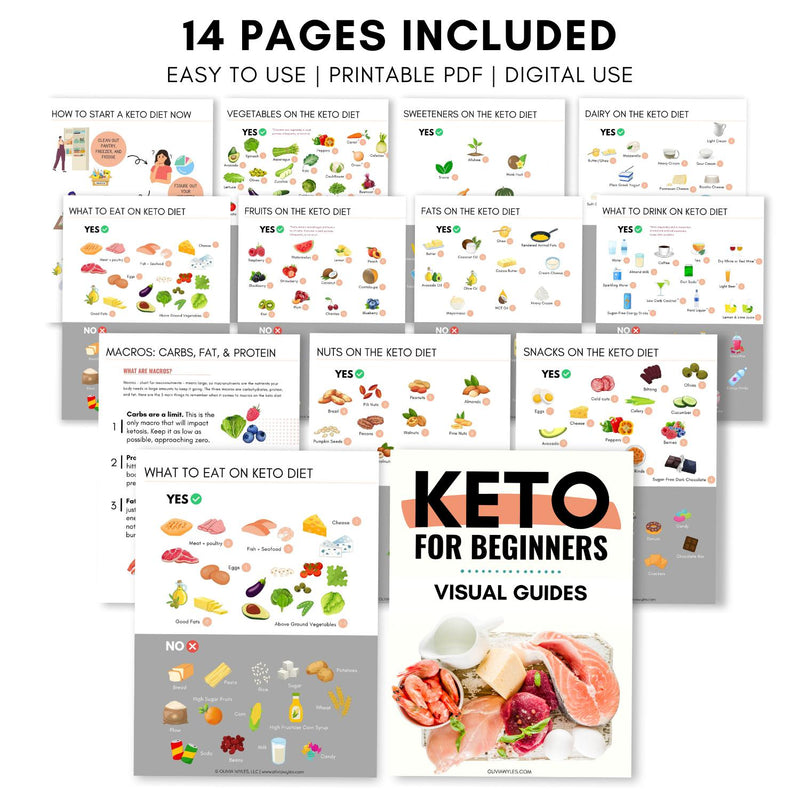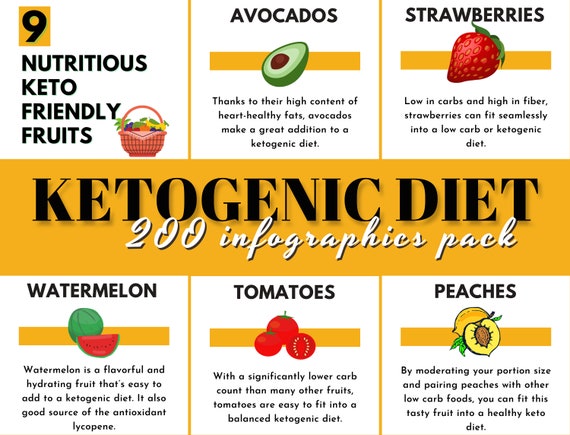Unlock the secrets to keto success! Discover the essential tools and tips every beginner needs to thrive on the ketogenic diet.
Table of Contents
- Introduction to the Keto Diet
- Starting the Keto Journey
- The Basics of Keto Dieting
- Creating Your Keto Meal Plan
- Grocery Shopping for Keto
- Eating Out on Keto
- Overcoming Challenges
- Tracking Your Progress
- Support and Resources
- Conclusion: Beginning Keto with Confidence
- FAQs (Frequently Asked Questions)
Introduction to the Keto Diet
Have you heard about the keto diet for beginners? It’s a popular way of eating that can help you burn fat and feel more energetic. Let’s dive into what the keto diet is all about and why it’s so easy and effective for beginners.
What Is Keto?
The keto diet, short for ketogenic diet, is a high-fat, moderate-protein, and low-carbohydrate eating plan. By drastically reducing your carb intake and replacing it with fats, your body enters a metabolic state called ketosis. In ketosis, your body becomes efficient at burning fat for energy, leading to weight loss and improved health.
Benefits of the Keto Diet
For beginners, the keto diet offers a range of benefits. Not only can it help you lose weight by burning fat for fuel, but it also improves mental clarity, regulates blood sugar levels, and boosts energy levels. Say goodbye to those mid-day slumps and hello to sustained energy throughout the day!
Starting the Keto Journey
Embarking on a new journey like the keto diet can feel overwhelming, but taking the first step is crucial. Begin by setting personalized goals that align with your health and wellness aspirations. Whether your aim is to lose weight, improve energy levels, or enhance overall well-being, defining your objectives will guide you through this process.
Understanding Your Body
Every body is unique, and how each individual responds to the keto diet may vary. It’s essential to listen to your body during the transition period. Be attentive to any changes or signals it may be sending you as you adjust to this new way of eating. Understanding how your body reacts will help you tailor your keto journey to suit your specific needs.
The Basics of Keto Dieting
Embarking on a keto diet journey can be both exciting and overwhelming, especially for beginners. To kickstart your keto lifestyle, it’s essential to understand the basic principles of this popular diet plan. Let’s delve into what you need to know:

Image courtesy of www.pinterest.com via Google Images
What to Eat
When following a keto diet, your meals should primarily consist of low-carb, high-fat foods. Some staples of a keto-friendly diet include:
- Healthy fats like avocados, olive oil, and nuts
- Proteins such as meat, fish, and tofu
- Low-carb vegetables like spinach, broccoli, and zucchini
- Dairy products like cheese and full-fat yogurt
- Eggs, a versatile and protein-rich option
These foods form the basis of a successful keto diet plan, helping your body enter a state of ketosis where it burns fat for energy instead of carbs.
What to Avoid
On the flip side, there are certain foods you should steer clear of when on a keto diet. These include:
- Sugary snacks and desserts that are high in carbohydrates
- Starchy foods like bread, pasta, and rice
- Sugary beverages such as soda and sweetened juices
- Processed foods containing hidden sugars and carbs
- High-carb fruits like bananas, grapes, and mangos
Avoiding these items will help you stay on track with your keto goals and keep your body in a state of ketosis for optimal fat burning.
Creating Your Keto Meal Plan
When starting a keto diet, it’s essential to plan your meals ahead of time to ensure you stay on track. Meal prepping can be a great way to save time and make healthier choices. By planning your keto-friendly meals in advance, you can avoid falling back on old eating habits and stay focused on your goals.
Sample Menu
Here’s an example of what a day’s keto menu might look like for a beginner:
Breakfast: Scrambled eggs with avocado
Lunch: Grilled chicken salad with olive oil dressing
Snack: Almonds or celery with cream cheese
Dinner: Salmon with asparagus and butter sauce
Remember to adjust portions according to your caloric needs and make sure to include a balance of protein, healthy fats, and low-carb vegetables in each meal.
Grocery Shopping for Keto
When you’re following a keto diet, it’s essential to fill your shopping cart with the right foods. Here’s a beginner-friendly list of keto-approved groceries to look for when you go shopping:

Image courtesy of perfectketo.com via Google Images
- Low-carb vegetables like spinach, broccoli, and cauliflower
- Healthy fats such as avocados, olive oil, and nuts
- Proteins like poultry, eggs, and fatty fish
- Dairy products like full-fat cheese and Greek yogurt
- Sugar-free condiments and spices
Reading Labels
Reading food labels is crucial when you’re on a keto diet to ensure the products you buy align with the diet’s parameters. Here are some tips on understanding nutrition labels:
- Focus on the total carb content: Choose foods with lower net carbs by subtracting fiber and sugar alcohols from total carbs.
- Look for hidden sugars: Avoid products with added sugars, sweeteners, or high-carb ingredients like corn syrup.
- Check the serving sizes: Pay attention to portion sizes to avoid unknowingly consuming too many carbs.
Eating Out on Keto
When going out to eat while on a keto diet, it’s essential to choose restaurants that offer menu items suitable for your dietary needs. Opt for places that serve dishes with plenty of protein and healthy fats, such as steakhouses, seafood restaurants, or even some fast-casual establishments that allow for customization.
Navigating the Menu
When dining out, navigating the menu can sometimes be a challenge, but it’s entirely possible to stick to your keto plan. Look for dishes that are centered around protein sources like meat, poultry, or fish. Avoid menu items that are breaded or come with sugary sauces, and opt for side dishes like salad or vegetables instead of potatoes or rice. If you’re unsure about certain ingredients, don’t hesitate to ask the server for more information.
| Item | Description |
|---|---|
| Keto Meal Plan | A guide with recipes and meal ideas that fit the ketogenic diet. |
| Healthy Fats | Coconut oil, olive oil, avocados, nuts, and seeds are essential for a keto diet. |
| Low-Carb Veggies | Spinach, broccoli, cauliflower, and zucchini are great options for keto-friendly vegetables. |
| Protein Sources | Chicken, beef, fish, and tofu are good sources of protein for a ketogenic diet. |
| Electrolytes | Adding salt, magnesium, and potassium supplements can help with keto flu symptoms. |
| Meal Prep Containers | Having containers to store prepped meals can make sticking to the diet easier. |
Overcoming Challenges
One of the common challenges that beginners face when starting the keto diet is something called the “keto flu.” This can happen as your body adjusts to using fat for fuel instead of carbs. Symptoms may include fatigue, headaches, dizziness, and irritability. To overcome the keto flu, make sure to stay hydrated, replenish electrolytes by adding salt to your meals, and give your body time to adapt to the new way of eating. Remember, this is a temporary phase, and it will pass as your body becomes keto-adapted.

Image courtesy of shop.oliviawyles.com via Google Images
Staying Motivated
Staying motivated on any diet can be tough, but especially when making significant changes like transitioning to a keto lifestyle. To keep your momentum going, set small, achievable goals for yourself, celebrate your successes along the way, and surround yourself with positive reinforcement. Find a buddy or join a support group to share your experiences and stay inspired. Remember why you started this journey in the first place – whether it’s for weight loss, better health, or increased energy. Keep that goal in mind, and you’ll be more likely to stay motivated and committed to the keto diet.
Tracking Your Progress
As you embark on your keto journey, it’s crucial to pay attention to how your body is responding. Keep an eye out for positive changes like weight loss, increased energy levels, and improved mental clarity. These are signs that your body is adapting well to the keto diet.
Additionally, you may notice physical changes like clothes fitting differently or seeing differences in the mirror. These are all indications that your body is making progress towards your health and wellness goals.
Adjusting Your Diet Plan
While following a keto diet plan, it’s essential to be flexible and willing to make adjustments as needed. If you find that certain foods don’t agree with you or you’re not seeing the desired results, don’t be afraid to tweak your meal plan.
Consider consulting with a healthcare provider or a nutritionist to get personalized advice on how to modify your diet plan for optimal results. Remember, everyone’s body is different, so what works for someone else may not work for you. Listen to your body and make changes accordingly to ensure long-term success on your keto journey.
Support and Resources
Embarking on a new journey like the keto diet can be exciting, but it can also be challenging at times. That’s why having a support system in place is crucial for staying motivated and on track. Here we’ll explore the importance of having support through community, friends, or online resources during your keto journey.

Image courtesy of www.etsy.com · In stock via Google Images
Finding Support Groups
Joining a support group of like-minded individuals who are also on the keto diet can be incredibly beneficial. You can share tips, recipes, struggles, and successes with one another, creating a sense of camaraderie and motivation. Look for local meetups or online forums where you can connect with others who are on a similar path.
Keto Diet Apps and Tools
Technology can be a great ally in your keto journey. There are numerous apps and digital tools available that can help you manage your keto diet plan more efficiently. These tools can track your macros, provide recipe ideas, create meal plans, and even offer reminders and motivation to stay on course. Consider exploring different apps to find the ones that best suit your needs and preferences.
Conclusion: Beginning Keto with Confidence
Starting a new diet can be both exciting and intimidating, especially when diving into the world of the keto diet. By now, you’ve learned the basics of what the keto diet is and how it can benefit you as a beginner. You’ve also received valuable tips on starting your keto journey, understanding your body’s needs, and creating a meal plan that suits your lifestyle.
The key to success on the keto diet is to approach it with confidence and determination. Remember, you have all the tools and knowledge you need to embark on this new chapter of your health journey. With a positive mindset and a well-thought-out plan, you can thrive on the keto diet and achieve your wellness goals.
As you begin your keto journey, keep in mind the importance of monitoring your progress and making adjustments as needed. Listen to your body, stay motivated, and seek support from the keto community to stay on track. Remember, consistency is key when it comes to any lifestyle change, so trust the process and be patient with yourself.
By following the guidelines laid out in this guide, you are equipped to begin your keto diet with confidence. Stay committed, stay focused, and most importantly, believe in yourself. With determination and perseverance, you can successfully navigate the world of keto and reap the many benefits it has to offer. Here’s to a healthier, happier you on the keto diet!
FAQs (Frequently Asked Questions)
Can I eat fruits on keto?
When following a keto diet, it’s essential to limit your fruit intake as most fruits contain natural sugars that can interfere with the process of ketosis. However, small amounts of low-carb fruits such as berries can be enjoyed occasionally while staying within your daily carb limit.
How do I know if I’m in ketosis?
There are a few signs and symptoms that indicate your body is in a state of ketosis. These may include increased energy levels, mental clarity, reduced appetite, and the production of ketones which can be measured using urine strips or blood tests.
What if I cheat on my keto diet?
If you happen to deviate from your keto diet by indulging in non-keto foods, don’t worry! It’s important to refocus and get back on track with your next meal. Remember that consistency is key, and occasional slip-ups should not deter you from your overall goals.




